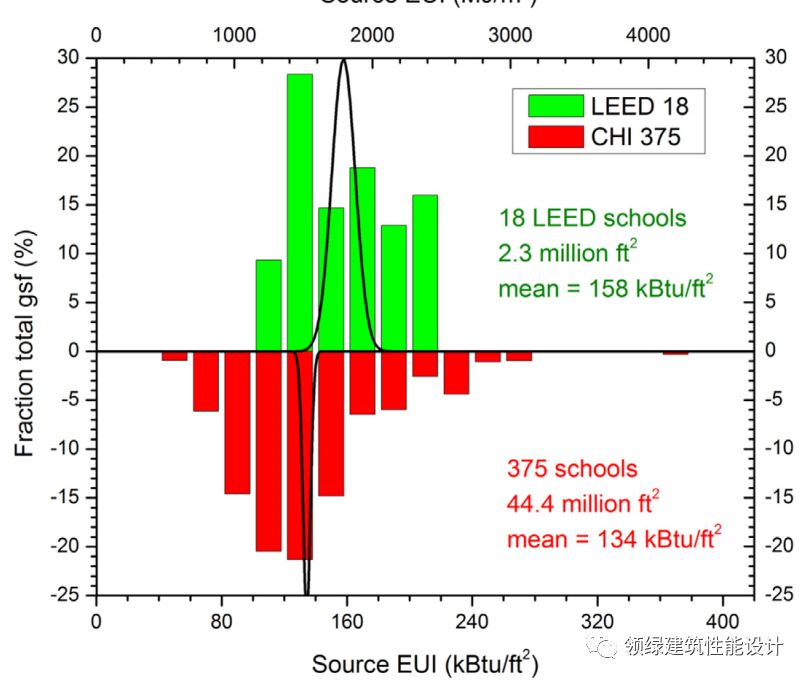LEED建筑消耗的源能源(Source Energy)高于非认证建筑
摘要翻译:芝加哥市最近公布了1521处商业地产的能源使用数据,2015年的建筑面积为50000英尺2(4650平方米)或更大。我们已经将芝加哥基准数据与美国绿色建筑委员会的LEED项目数据库进行了交叉引用,以确定132处芝加哥建筑,这些建筑在预期减少整个建筑能耗的项目中通过LEED认证。LEED认证的建筑物数量足以让我们了解到办公室、K-12学校和多户住宅建筑这些建筑是否比芝加哥的类似传统建筑使用更少的能源。对于所有三种建筑类型,我们发现LEED认证的建筑物使用的源能源(Source Energy)不少于未经LEED认证的相似建筑。此外,我们发现LEED认证的学校使用的源能源(Source Energy)比其他学校多17%。我们发现,在所有三种建筑类型中,LEED认证的建筑物在现场使用的能源(site energy)比可比传统建筑少约10%。这并不意味着节省能源,因为LEED认证的建筑物使用相对更多的电能。最后,当LEED认证的建筑物与其他更新的建筑物比较时,我们发现它们的能源消耗是相似的。我们相信,这是首次对LEED认证学校的能源性能进行研究。
点评:Site Energy是建筑在建筑上用能量,包括一次能源和二次能源,如果将一次能源和二次能源相比显然是不公平的。Source是将一次二次能源都转化成统一的能源(电能要被乘以3.1左右的系数),更能代表建筑真实的能耗值。

图1 学校类建筑的源能源对比
论文摘要:
The City of Chicago recently publicized energy usage data for 1521 commercial properties with floor area 50000 ft2 (4650 m2) or greater for the year 2015. We have cross-referenced the Chicago benchmarking data with the U.S. Green Building Council’s LEED project database to identify 132 Chicago properties that were LEED-certified in programs expected to reduce whole building energy use. The numbers of LEED-certified buildings are sufficient for Offices, K-12 Schools, and Multifamily Housing to learn whether these buildings use less energy than do similar conventional buildings in Chicago. For all three building types we find LEED-certified buildings use no less source energy than similar buildings that are not LEED-certified. Further, we find that LEED-certified schools use 17% more source energy than do other schools. For all three building types we find that LEED-certified buildings use roughly 10% less energy on site than comparable conventional buildings. This does not translate into source energy savings because LEED-certified buildings use relatively more electric energy. Finally, when LEED-certified buildings are compared with other newer buildings we find their source energy consumption to be similar. We believe this is the first such study of energy performance for LEED-certified schools.





